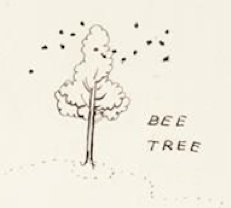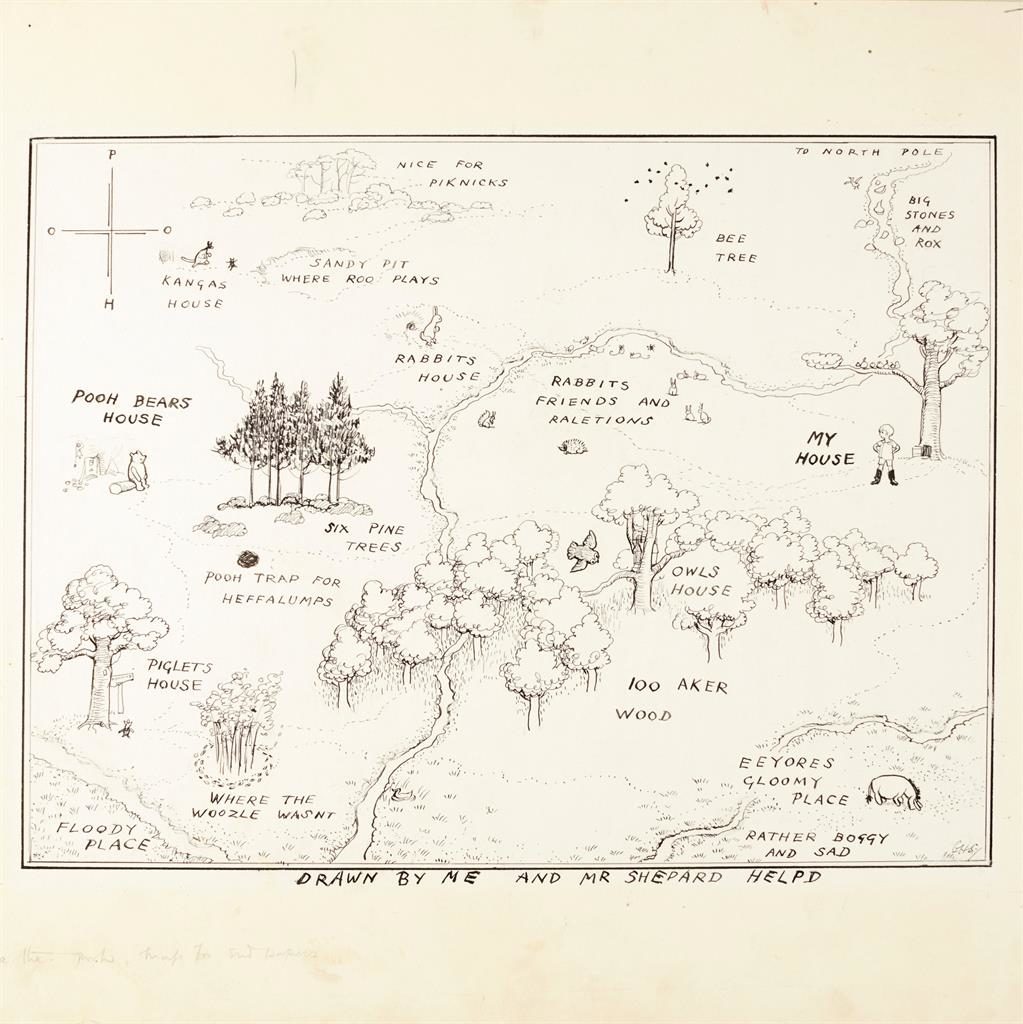Literary Mapping : Map of the Month (Feb 2020)
Feb. 5, 2020 | james | Map of Month

For the first-ever entry in our “Map a Month” blog post I thought long and hard, but in the end decided to go back to my own origin points in children’s classics. I think it is these maps lurking deep in my psyche that pulled me into this area of research as an adult. It’s hard to put your finger on why they evoke such strong feelings. Something about the visualization of the literary world, the sense of fully losing yourself in it through the map. For whatever reason these maps lure me in. They did as a child and they still do now.
The map for Winnie the Pooh (1901) is the iconic map from Children’s Fiction and it perfectly suits the text to which it corresponds. Figures are drawn in miniature as pictograms and each space locates them and relates to events from the episodic narrative: "THE SANDY PIT WHERE ROO PLAYS"; "WHERE THE WOOZLE WASNT". The map thus partly functions as a collective image of the contents of the book and works at a double level for adult and child reader. We might imagine a young child pointing to elements within the map that relate to particular stories rather than necessarily using it to map onto the space of the book as a whole. The adult, though, is more likely to be attuned to the underlying spatial politics of, say, Eeyore's marginalization in a "Gloomy Place . . . Rather Boggy and Sad" or Pooh and Christopher Robin's centrality.
At the bottom the map is signed: "Drawn by me and Mr. Shepard helpd". Here the illustrator (E. H. Shephard) adopts the persona of Christopher Robin as map-maker. This kind of slippage between adult/child and the making of the map is quite common (something similar happens in Arthur Ransome’s books). Deliberate misspellings on the map ("piknicks; "Raletions") are also interesting since the young child (to whom the stories are being read) will not register them at all, while the adult reader will know that they are incorrect. So, they "authenticate" Christopher Robin as maker of a simplistic map, but do so only to a reader who will immediately see through the device.
-Sally

[Image of original endpaper sketch for Winnie The Pooh (1928) sold for £430,000 from: https://www.sothebys.com/en/articles/winnie-the-poohs-original-hundred-acre-wood-unseen-for-50-years]
Recent Posts
- Literary Mapping : Map of the Month (Feb 2020) | Feb. 5, 2020
- Litcraft in Libraries - Another New Region, 12 August 2019 | Aug. 13, 2019
- Accenture-produced Leaflet | July 22, 2019
- Minecraft Day 2019, Lancaster Uni – 08 July 2019 | July 10, 2019
- Geographies of Gaming and VR, 3 July 2019, Birmingham | July 4, 2019

